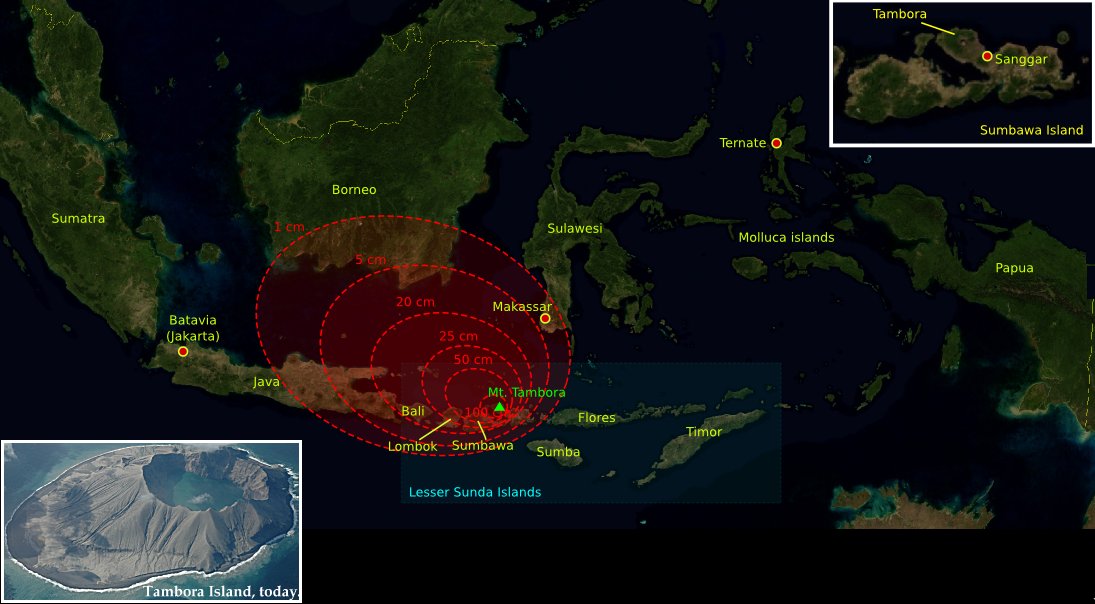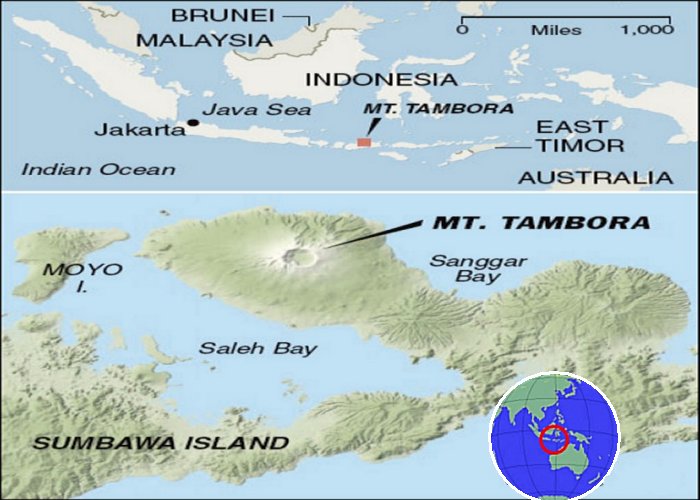MessageToEagle.com – On April 10-11, 1815, more than 13,000 feet high, Tambora Mount in Indonesia exploded killing about 92000 people and changed the global climate.
Tambora’s powerful eruption made the year 1816 without a summer as the global climate effects were felt.
Aerosols from the Tambora eruption blocked out sunlight and reduced global temperatures by 3 deg C. Europe missed a summer, and India had crop failures following the Tambora eruption.

Between 26 and 43 cubic miles of material was discharged (a recorded world record), around 12 cubic miles of gases, dust and rock was blasted into the atmosphere.
100 cubic km of magma was erupted and ten thousand people were killed immediately from the pyroclastic flows and the eventual toll due to starvation and disease may have been as high as 117,000.

The ground shook and sent tsunamis with a wave height of 10 m racing across the Java Sea. An estimated 10,000 of the island’s inhabitants died instantly.
The year 1816 was recorded as the “year without a summer”. Most of crops were destroyed, and in North Europe and North America, about 100,000 people died for starvation as a consequence of this dangerous eruption.
Poisoning deposits buried all crops causing the agricultural devastation and death of the most of livestock in much of the Northern Hemisphere.
MessageToEagle.com
Expand for references






